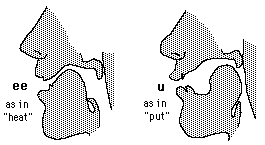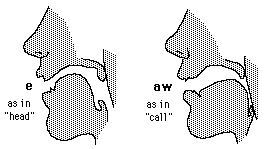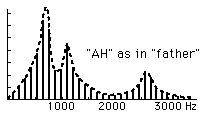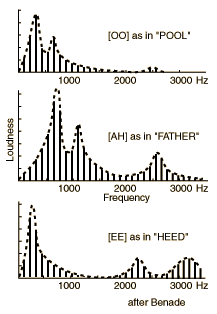Forming the Vowel Sounds
The vocal resonances are altered by the articulators to form distinguishable vowel sounds. The peaks in the vowel spectra are called vocal formants. Note the prominent role of the tongue in this process. The jaw position and lips also play a major part.
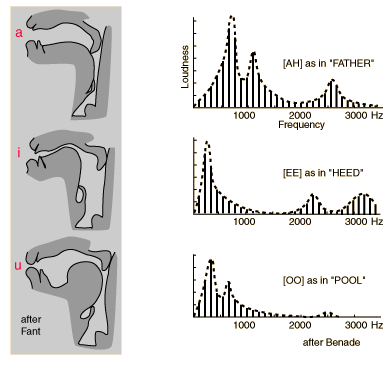
The sketches at left above are adapted from Gunnar Fant's "Acoustic theory of speech production" and are reportedly sketches taken from x-rays of the head during the production of these sounds. These are the vowels classified as IPA [a], [i], and [u] and roughly correlate with the vowels represented in the spectra from Benade. The emphasis should be on "roughly" since I don't know how close the correlation is. The intent here is to illustrate the role of the articulators and to point to the fact that their action has a major influence on the harmonic content of the voiced sounds. The normal ear is able to clearly distinguish those differences.
| Further discussion of Fant's presentation |
Voice concepts
Musical instruments
References
Sundberg
Sci. Amer.
Benade
Ch 19
Fant
| HyperPhysics***** Sound | R Nave |
